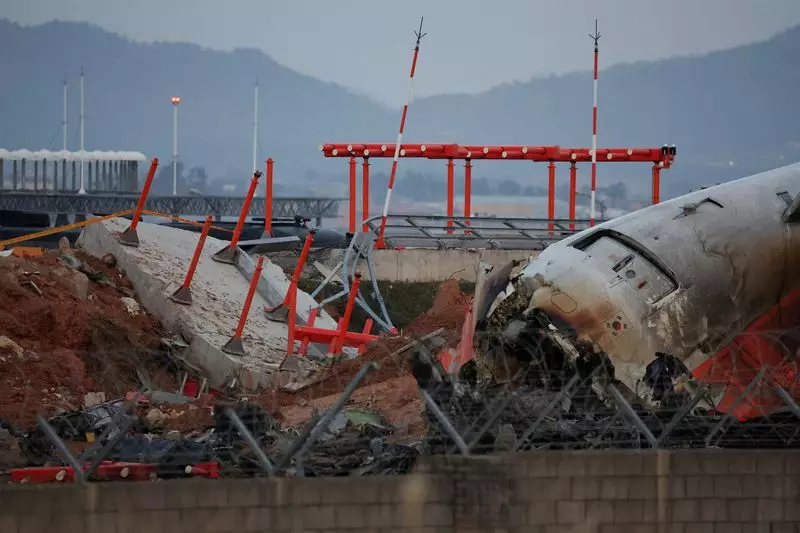On December 29, 2023, South Korea witnessed a harrowing aviation disaster involving Jeju Air flight 7C2216. The incident claimed the lives of 179 individuals, rendering it the most catastrophic air accident within the nation’s borders. As the transport ministry prepares to release a preliminary report by Monday, the aviation community is keenly awaiting insights into the contributing factors behind this tragic event.
Factors Under Investigation
One primary aspect under scrutiny is the potential impact of a bird strike on the Boeing 737-800 as it approached Muan International Airport from Bangkok. Preliminary details suggest that moments before the disaster, pilots communicated their concerns regarding birds in proximity to the aircraft. The ministry’s statement included that at 8:58:11 AM, the cockpit discussion shifted toward the presence of birds, culminating in a distress call just 45 seconds later. This timeline raises critical questions about the preparedness and response capabilities of the pilots in face of unexpected wildlife interactions.
The transport ministry has committed to thorough cooperation with international investigators from bodies such as the U.S. National Transportation Safety Board and France’s Bureau of Enquiry and Analysis for Civil Aviation Safety. This collaborative approach aims to ensure meticulous scrutiny of all evidence, including flight data and cockpit voice recordings, which ceased just before the crash. Such investigations can take months, underscoring the complexity of aviation accident analyses.
Surveillance footage from the airport has been pivotal in substantiating claims of bird strikes that occurred as the plane attempted a go-around. However, the distance of the cameras raises challenges in definitively assessing the immediacy of the impact and its severity. The discovery of duck feathers and blood in the GE Aerospace engines further corroborates the suspicion of a bird strike, prompting investigators to explore the precise mechanics of such wildlife interactions during critical landing procedures.
Moreover, an emerging consideration is the role played by the concrete embankment that supported navigation antennas, colloquially known as “localisers.” Analysis into its contribution to the disaster is warranted, especially since experts have indicated that its presence likely exacerbated the potential for lethal outcomes during the crash.
In response to the findings thus far, the ministry has indicated plans to remove the embankment to mitigate future risks to aviation safety. Such proactive measures are crucial not only for future flight paths but also as a testament to the gravity of ensuring thorough safety protocols in aviation around wildlife-heavy regions.
Moreover, this tragedy has ignited discussions about the broader aviation safety measures regarding bird strikes in South Korea. It emphasizes the need for enhanced systems to monitor avian activity near airports, as well as the development of strategies to reduce the risk of such incidents in the future.
The aftermath of the Jeju Air disaster calls for introspection and action. As families mourn their losses and investigators piece together the chain of events, it is imperative that the lessons learned from this tragedy shape policies and practices in the aviation sector. The meticulous examination of the causes, including environmental factors and infrastructure assessments, is a step towards preventing similar calamities in the future. In the face of such heart-wrenching loss, the collective commitment to safety remains paramount.

